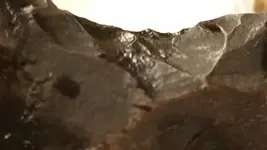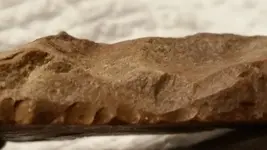You are using an out of date browser. It may not display this or other websites correctly.
You should upgrade or use an alternative browser.
You should upgrade or use an alternative browser.
Still learning - are these worked edges?
- Thread starter BearCreek
- Start date
joshuaream
Silver Member
- Joined
- Jun 25, 2009
- Messages
- 3,170
- Reaction score
- 4,514
- Golden Thread
- 0
- Location
- Florida & Hong Kong
Flint, Chert, Agate, Jasper, Quartz, Obsidian, Glass and many other types of brittle materials break with a conchoidal fracture. They break that way when someone whacks them with a hammer, they break that way when they roll in a creek for a while, they break that way when animals step on them, they break that way when a flake is used as a knife or when a tool scrapes on hard bone.
It can be hard to tell in a picture, heck it can be hard to tell in hand sometimes.
That flaking on the original pieces here could be use wear, intentional flaking, or creek damage.
It can be hard to tell in a picture, heck it can be hard to tell in hand sometimes.
That flaking on the original pieces here could be use wear, intentional flaking, or creek damage.
Ohio_Doug
Hero Member
Are they worked? Yes indeed they are. Are they worked by man? No one is going to know for 100% certainty by the photos you submitted. A photo of the entire piece will help tremendously. None the less, your focus is on the edge work and that's exactly where your focus needs to be to avoid bringing "rocks" home.
Edit: I just saw your updated post. You obviously have the eye on what to look for. I think you'll be finding artifacts soon, good luck in your hunting!
Edit: I just saw your updated post. You obviously have the eye on what to look for. I think you'll be finding artifacts soon, good luck in your hunting!
Last edited:
Get-the-point
Bronze Member
Flint, Chert, Agate, Jasper, Quartz, Obsidian, Glass and many other types of brittle materials break with a conchoidal fracture. They break that way when someone whacks them with a hammer, they break that way when they roll in a creek for a while, they break that way when animals step on them, they break that way when a flake is used as a knife or when a tool scrapes on hard bone.
It can be hard to tell in a picture, heck it can be hard to tell in hand sometimes.
That flaking on the original pieces here could be use wear, intentional flaking, or creek damage.
I completely agree Joshua. However with that logic come the fact that impacts to the piece will cause multiple chips. It is when those chips are highly concentrated and side by side I have to question was it done by man. In this case I believe they were. If it was Creek Battering as suggested it would be sporadic flakes. Not lined up like the posters piece unless it was against something literally being ground against. Then the possibility is there. Problem is the areas shown show a horizontal run of pressure flaking. A impact fracture leaving that type of flaking although possible just isn't likely. Of course that is my opinion yet I've seen glass shattered and yes it leaves a detached flake scar yet it is not the entire piece. Plus those secondary flakes do not line up like the example posted here. They will mostly be random unless again if it was ground against another stone. Possible...yes...
Similar threads
- Replies
- 69
- Views
- 2K
- Replies
- 2
- Views
- 493
- Replies
- 7
- Views
- 795
Users who are viewing this thread
Total: 1 (members: 0, guests: 1)



